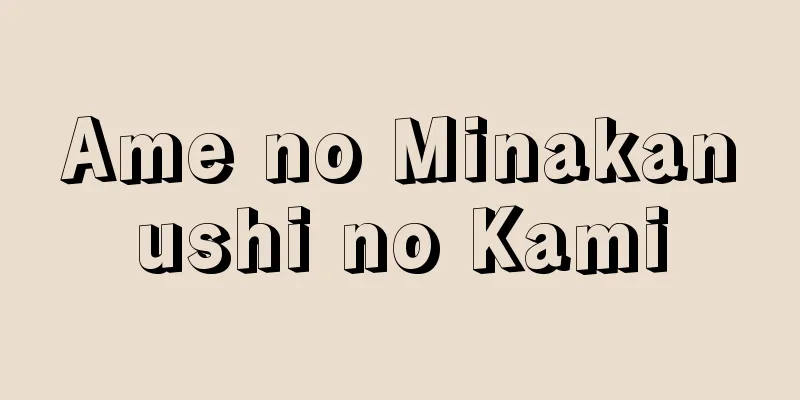Juntendo University

|
Sato Taizen opened a school of Western studies in Sakura, Shimousa Province (Sakura City, Chiba Prefecture). After studying in Nagasaki for over three years, Sato Taizen returned to Edo and specialized in Western surgery, opening a practice in Yagenbori near the foot of Ryogoku Bridge, where he taught students and called his school Wada Juku (1838). In 1843 (Tenpo 14), he handed over Wada Juku to his son-in-law Hayashi Dokai, and moved to Sakura, under the castle of Hotta Masayoshi, and opened Juntendo Juku. Junten means "following the way of heaven." Juntendo gained a reputation as the home of Western surgery, in contrast to the Chinese-Dutch fusion surgery founded by Hanaoka Seishu, which was widespread at the time, and many people from all over the country studied there. In 1859 (Ansei 6), Taizen retired and his adopted son, Sato Shunkai (Shochu), became the second head of Juntendo. Shochu also traveled to Nagasaki to study and learned about the latest Western medicine of the time from Pompe. In 1869 (Meiji 2), Shochu was welcomed by the Meiji government to become a doctorate holder and take up the top professorship at Daigaku Toko (the forerunner of the Faculty of Medicine at the University of Tokyo). However, when a German teacher visited, he resigned from Daigaku Toko and in 1873 opened the first Juntendo in Tokyo in Shitaya Neribei-cho. Two years later, the hospital was moved to its current location in Ochanomizu, where a two-story wooden hospital was built. He adopted his senior disciple Okamoto Doan and left him in charge of Juntendo in Sakura. Throughout most of the Meiji period, Juntendo in Ochanomizu was headed by Shochu's adopted son, Susumu (formerly Takakazu), who focused on training doctors (mainly post-graduate education). The fourth generation, Tatsujiro (formerly Kawai), succeeded Susumu and ran Juntendo during the Taisho and Showa periods. In 1943 (Showa 18), approval was given for the establishment of Juntendo Medical College, which developed into today's Juntendo University. [Yasuhito Fukase] "Juntendo History" (1980), edited and published by Juntendo University [Reference] |Affiliated with Juntendo University School of Medicine. It began in 1873 (Meiji 6) when the second head of Juntendo, Sato Sakano, opened the first hospital in Tokyo. The photo shows Building 1, which opened in 1993 (Heisei 5). Bunkyo-ku, Tokyo ©Yutaka Sakano "> Juntendo Hospital Source: Shogakukan Encyclopedia Nipponica About Encyclopedia Nipponica Information | Legend |
|
佐藤泰然(たいぜん)が下総(しもうさ)国佐倉(千葉県佐倉市)に開いた蘭学(らんがく)塾。佐藤泰然は3年余りの長崎遊学を終えて江戸に帰り、西洋外科を専門として、両国橋のたもとに近い薬研堀(やげんぼり)に開業し、同時に門弟を教えて和田塾と称した(1838)。1843年(天保14)には和田塾を娘婿の林洞海に譲って、泰然は堀田正睦(まさよし)の城下である佐倉に移って順天堂塾を開いた。順天というのは「天道にしたがう」という意味である。当時広く行われていた、華岡青洲(はなおかせいしゅう)を祖とする漢蘭折衷外科に対して、順天堂は西洋外科の本拠として名をあげ、各地から多くの人々が入門した。 1859年(安政6)泰然は隠居し、養子の佐藤瞬海(しゅんかい)(尚中(しょうちゅう))が第2代の順天堂主となった。尚中も長崎に遊学し、ポンペについて当時の最新の西洋医学を修得している。69年(明治2)尚中は明治政府に迎えられて大学大博士となり、大学東校(東京大学医学部の前身)の最高の教授職についたが、ドイツ人教師の来訪を機に大学東校を辞して、73年下谷練塀(したやねりべい)町に初めて東京の順天堂を開いた。翌々年、現在地の御茶ノ水に木造2階建ての病院をつくって移転した。佐倉の順天堂は高弟の岡本道庵を養子として、彼に任せた。 明治の大部分を通じて、お茶の水の順天堂は尚中の養子、進(旧姓高和)が主宰し、医師の養成(主として卒後教育)にとくに力を注いだ。第4代達次郎(旧姓河合)が進の後を襲い、大正・昭和と順天堂の経営にあたった。1943年(昭和18)順天堂医学専門学校の設立が認可され、これが今日の順天堂大学へと発展した。 [深瀬泰旦] 『順天堂大学編・刊『順天堂史』(1980)』 [参照項目] |順天堂大学医学部附属。1873年(明治6)、第2代順天堂主佐藤尚中が東京に初めて病院を開いたことに始まる。写真は1993年(平成5)に開院した1号館。東京都文京区©Yutaka Sakano"> 順天堂医院 出典 小学館 日本大百科全書(ニッポニカ)日本大百科全書(ニッポニカ)について 情報 | 凡例 |
Recommend
Apostolios - Apostolios
…Humans, animals, earth, stone, wood, and all met...
Ihoku
⇒ Migie-Ihoku Source: Kodansha Digital Japanese Na...
Vireo olivaceus (English spelling)
...Some scholars believe that this family is more...
Ankake porridge - Ankake porridge
...Ankake tofu is made by boiling tofu in kelp st...
Coelogyne speciosa (English spelling)
…[Koichi Ejiri]. … *Some of the terminology expla...
Palau - Republic of Palau (English spelling)
An island nation located 820 km east of the Phili...
Conducting - Shiki (English spelling)
Conducting a musical performance is an act of dir...
Barlaam
…In 26 he was ordained in Thessalonica, and retur...
Greatest common denominator - saidai koyakusuu
For two or more positive integers, an integer (di...
Shuzaburo Arai
1862-1885 A social activist in the Meiji period. ...
Mt. Kangaharasuri
...After the war, it became a production center f...
White-collar crime
Crimes committed by people with high social stand...
Influenza bacillus - Influenza bacillus
...Short bacilli are called short bacilli, and lo...
Iwakidaira - Iwakidaira
Also written as Iwakidaira. A castle town in Iwaki...
Earthbellus - Earthbellus
…He studied at the University of Heidelberg, and ...







![Babeldaob [island] - Babeldaob](/upload/images/67cc8d0239d45.webp)

